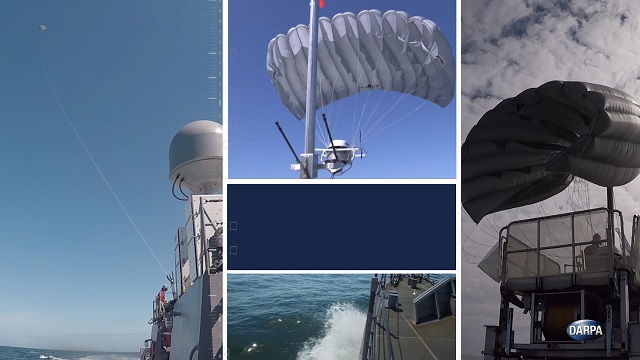|
|
|||
|
DARPA video
|
|||
|
|
|||
|
“We’re very pleased with the USS Zephyr testing, which showed that a future system based on TALONS could provide operational benefits for even small Navy vessels,” said Scott Littlefield, a program manager in DARPA’s Tactical Technology Office (TTO). “In the next year, we will continue our cooperative relationship with the U.S. Navy and work toward fully automating launch and recovery, which would make the system even easier to use on manned vessels and compatible with unmanned surface vessels.”
“Expectations were really exceeded with the ease of not only deployment, but the recovery of the system,” said Lt. Cmdr. Cameron Ingram, commanding officer of the Zephyr. “Beyond the initial launch, it immediately stabilized, and it had a very smooth transition all the way up to altitude. I was very impressed with how stable it was.” The TALONS test on USS Zephyr built upon a successful joint test last year with DARPA’s Anti-Submarine Warfare (ASW) Continuous Trail Unmanned Vessel (ACTUV) program. ACTUV’s technology demonstration vessel set sail with TALONS as its first payload as part of open-water testing off the coast of California. TALONS is part of DARPA’s Phase 1 research for Tern, a joint program between DARPA and the U.S. Navy’s Office of Naval Research (ONR). |
|||
Video: DARPA Testing TALONS Sensor Aboard U.S. Navy Patrol Vessel USS Zephyr
- Posted On











